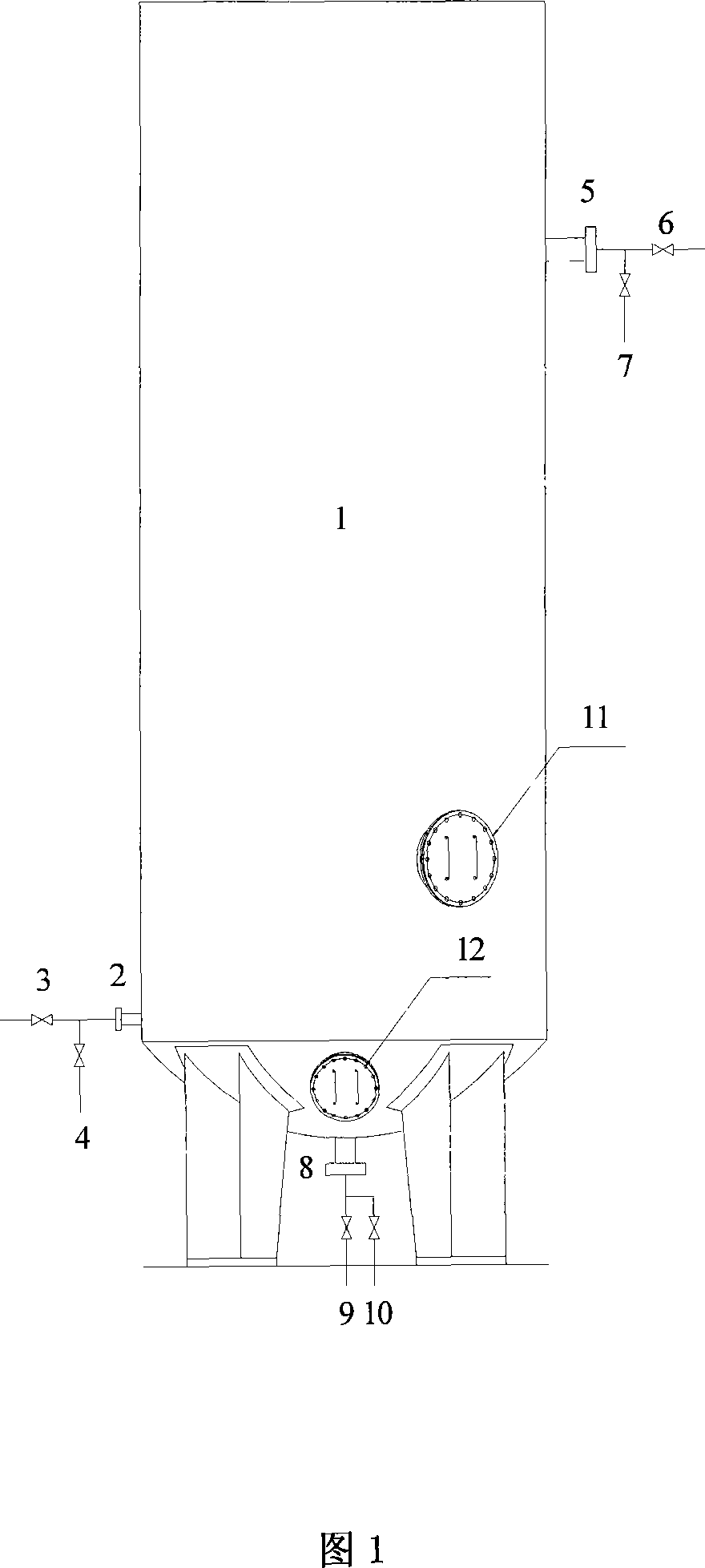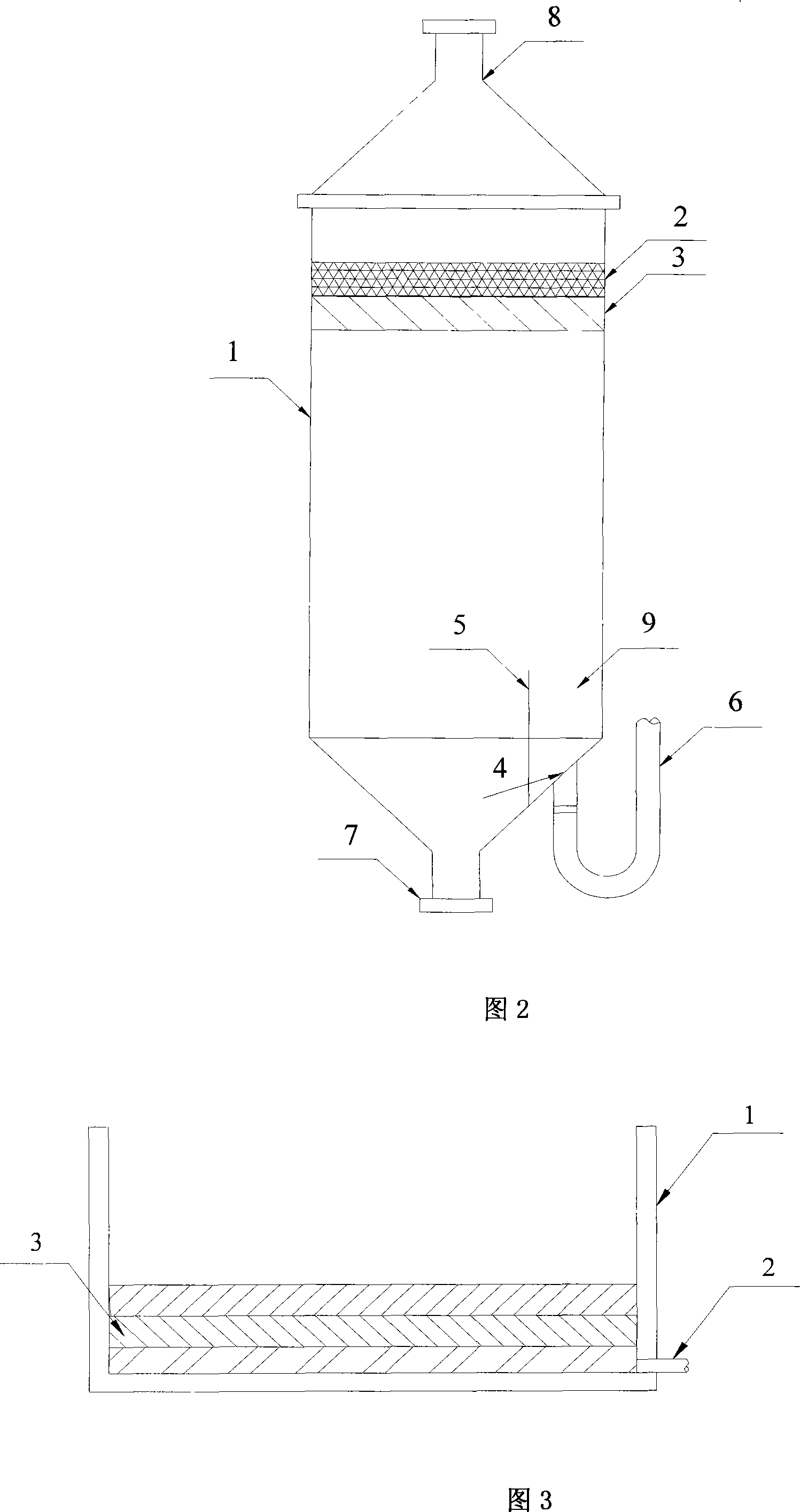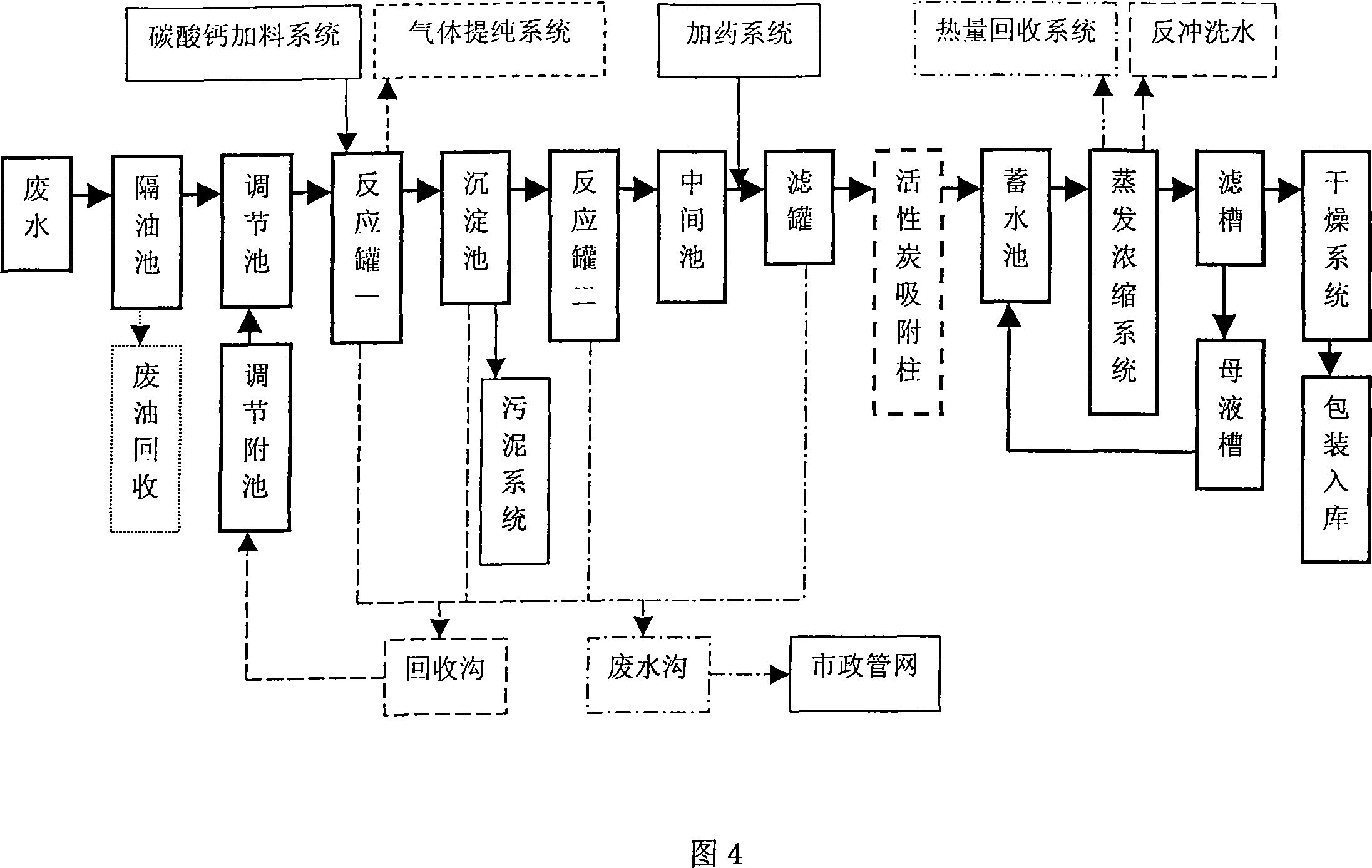Epoxy ester wastewater recycling treatment method
A treatment method and epoxy ester technology, applied in water/sewage multi-stage treatment, water/sludge/sewage treatment, flocculation/sedimentation water/sewage treatment, etc. Energy consumption, guaranteed treatment effect, convenient filler replacement and equipment maintenance effect
- Summary
- Abstract
- Description
- Claims
- Application Information
AI Technical Summary
Problems solved by technology
Method used
Image
Examples
Embodiment Construction
[0052] The present invention will be further described below in conjunction with drawings and embodiments.
[0053] The water quality of formic acid wastewater generally from the production of epoxidized soybean oil is shown in Table 1.
[0054] Table 1 Water quality of formic acid wastewater
[0055] Substance name
concentration
formic acid
2~20%
0.2~2.0%
100~5000mg / L
COD Cr
10000~300000mg / L
pH
2~4
color
Colorless ~ dark gray
[0056] Implementation Step 1: Oil Separation
[0057] Formic acid wastewater from epoxy soybean oil production first enters the grease trap. After water distribution and aeration, more than 99% of the oil in the wastewater floats to the surface, collects in the grease trap, and then flows into the recovery oil drum. The formic acid water in the lower layer is sent to the regulating tank through the automatic drainage device. ...
PUM
 Login to View More
Login to View More Abstract
Description
Claims
Application Information
 Login to View More
Login to View More - R&D
- Intellectual Property
- Life Sciences
- Materials
- Tech Scout
- Unparalleled Data Quality
- Higher Quality Content
- 60% Fewer Hallucinations
Browse by: Latest US Patents, China's latest patents, Technical Efficacy Thesaurus, Application Domain, Technology Topic, Popular Technical Reports.
© 2025 PatSnap. All rights reserved.Legal|Privacy policy|Modern Slavery Act Transparency Statement|Sitemap|About US| Contact US: help@patsnap.com



